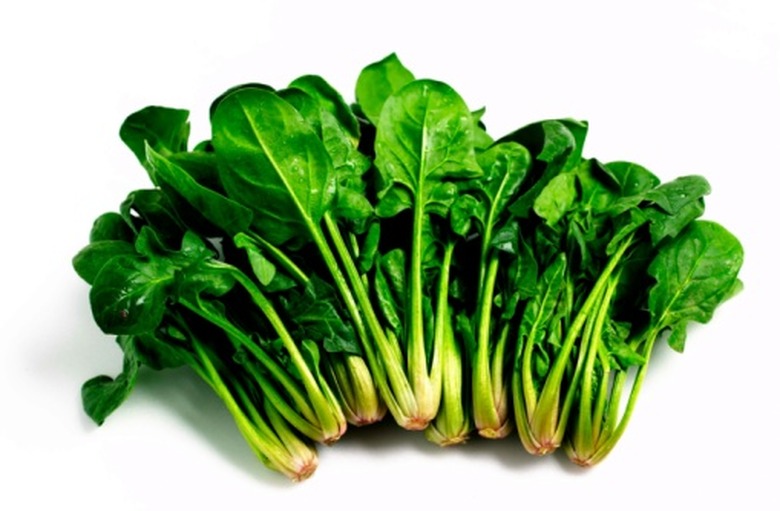Spinach Plants Turning Yellow
A beginner at growing spinach and other vegetables might be surprised at just how much of the plant naturally yellows with age. The succulent, inner green leaves are what we usually encounter at markets. If spinach is prematurely yellowing, or if the younger leaves lack that dark, rich green color, there may be a nutrient deficiency or pest problem.
Factors
Disease, improper soil conditions, excessive heat or flooding can all cause spinach to start yellowing. Disease symptoms can be very similar to improper soil conditions. For instance, fusarium wilt and boron deficiency both yellow the leaves and stunt the spinach plant. Alkaline soils may cause similar symptoms. Take in all the factors of the situation, such as temperature and quality of the soil, before fearing the worst for your spinach plants.
Prevention
Spinach thrives in well-drained, lightly moist soil rich in organic material, with a pH of 6.4 to 6.8. It suffers at temperatures above 75 degrees, resulting in yellowing or possibly even bolting. Planting very early in the spring to avoid summer heat or planting spinach in the fall sidesteps this problem. A garden rich in ladybugs and other insects that prey on aphids (the insect that vectors the yellowing disease called blight) reduces insect-vectored diseases. Planting fungus and virus-resistant varieties reduces the threat of disease, as well.
Solutions
Spinach insect pests can be treated with insecticidal soap approved for food plants. Fungal diseases are treated with fungicides, but spinach with viruses may need to be destroyed to prevent the infection from spreading to other crops. Soils that are too alkaline can be top-dressed with coffee grounds or commercial acidifiers. Soils that are too acidic can be dressed with lime. If soils are only slightly off their proper pH, applying compost will help bring it back into balance. Compost and organic fertilizers also help with a wide range of nutrient deficiencies.
Considerations
A soil test will reveal any nutrient deficiencies or pH problems and also shows nutrient surpluses. The idea is not to indiscriminately add overwhelming amounts of nutrients in hopes of reviving your soil, but to add what the spinach needs now. This also ensures that plenty of organic matter is used in the soil before the next season to prevent future nutrient problems. If the yellowing is recurring, it may be a sign of a soil-borne disease that stays in the soil year after year. Bring a sample to your local extension service or garden center.
